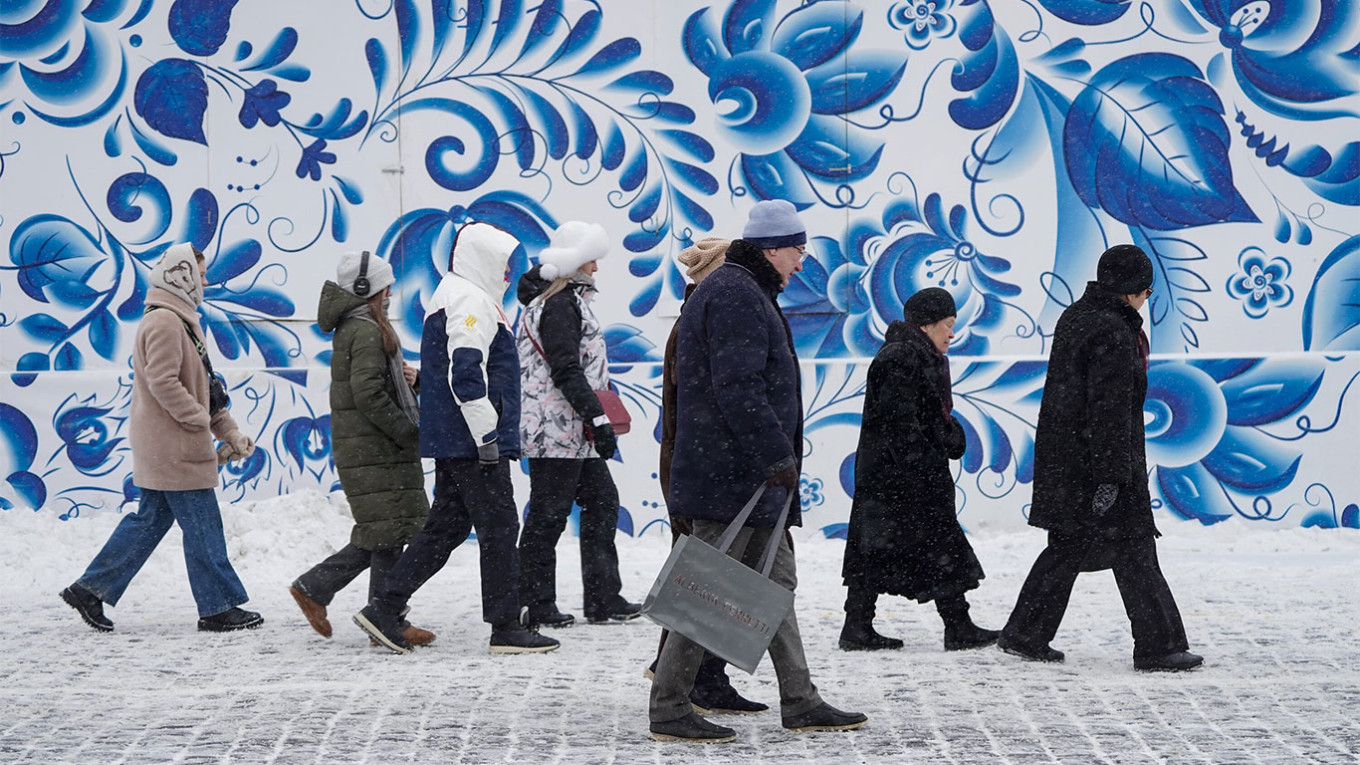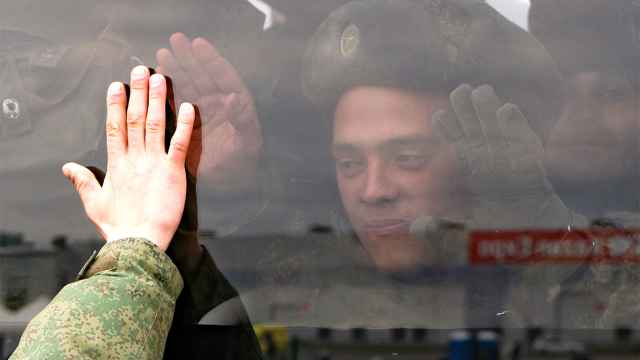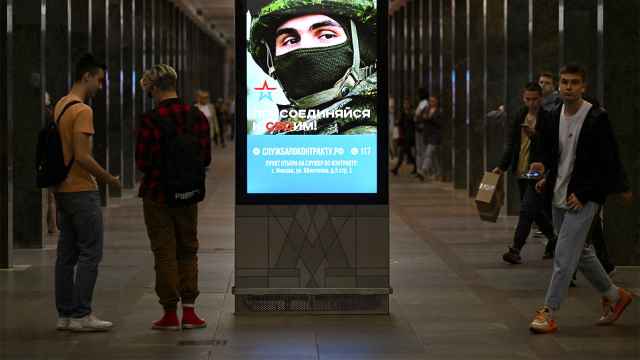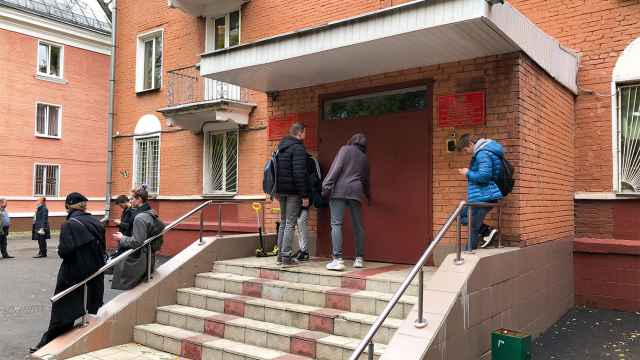At the end of last year, Russian President Vladimir Putin ordered the government to draw up a package of measures to increase Russia's birth rates and life expectancy. He also expressed bewilderment at the falling birth rates in a number of regions.
Just a few days later, Defense Minister Sergei Shoigu proposed upping the age from which Russian men are required to perform their military service from 18 to 21 and increasing the upper age limit for conscription from 27 to 30. These proposals mean young men would be called up after earning their college degrees, and trained specialists would be pulled out of the job market to have their skills voided by military service.
There is a major discrepancy between these two objectives. If men go to war or emigrate en masse instead of fathering children, where will the children come from? The effect on the labor market will also be severe: conscription at such a productive age leeches the labor force out of an economy that is already expected to lose 3–4 million people aged 20–40 between 2020 and 2030 due to demographic trends.
The working population is also losing those who have already left or will leave the country in response to the intense militarization of life, not to mention those who are mobilized, killed, or maimed in combat if the so-called “special operation” continues.
Combined, this will create a significant labor force deficit and a plethora of demographic problems, further exacerbating the negative dynamics in birth rates that have been observed in Russia since 2017. The decrease in the working-age population will become chronic, and the “preservation of the people” that Putin has spoken about for many years will not be achieved.
Some of the objective reasons for Russia’s demographic problems reflect historical dynamics: the number of women of childbearing age is falling, and the average age at which women are having children is rising steadily among urban, well-educated populations.
There are also short- and medium-term factors with potentially long-term consequences. The Covid-19 pandemic and the “special military operation” have created extreme uncertainty about the future. This has predictably changed family planning: some people are deciding not to have children at all, while others are postponing having them until a time of greater psychological and financial stability. Nor does the militarization of life in Russia encourage people to add to their families, except for those who consider it their duty to supply the motherland with cannon fodder for future wars.
A year of military service for the 300,000 men mobilized into the army in September and October 2022 will mean 25,000 fewer births, estimates Mikhail Denisenko, director of the Institute of Demography at Moscow's Higher School of Economics. That isn’t a huge number, but it could rise significantly as a result of emigration, the long-term decline in birth rates, and the potential expansion of the mobilization age.
Russian legislators are also pitching in to increase the birth rate. Worried about the reduced production of future soldiers for their imaginary empire, lawmakers — supported by the clergy — are mulling a partial ban on abortion. Yet Russia has, for the most part, completed the “third demographic transition,” in which the majority of the population gains the ability to regulate birth rates. Abortions are no longer widespread in the country.
We are witnessing a phenomenon Russia has faced many times: wave after wave of war and repression is draining away human resources. The best way to promote higher birth rates is to create the conditions for a stable, peaceful, and safe life — which means keeping young men safe from the clutches of the military.
Until 2022, Russia was considered a market economy with mid-level incomes, though those incomes were not distributed evenly, which fueled a trend that worries education economics experts: young people whose families cannot afford to put them through college have started rejecting higher education in favor of secondary vocational training, which allows them to enter the labor market sooner.
The proposal to change the conscription age to 21, which was likely approved by the Kremlin, will be a double whammy for the labor market and the economy: highly qualified college graduates unable to enter the labor market will instead end up in the military and lose their qualifications, while young men with vocational degrees who are already in the labor market will be torn from the economy midway through honing their skills. It would be a mistake to think that this wouldn’t affect the qualitative and quantitative indicators of Russian GDP, household income, and quality of human capital.
Essentially, there is a second war underway at home: a war against the quality of Russia's human capital. And the militarization of the country creates all of the conditions to reduce this quality for the longest of terms. Although Russia will not see large-scale unemployment, this is only the case because the economy will face a deficit of both high-skilled and low-skilled labor.
Putin has encouraged the armed forces not to be shy about requesting more financing, and this also impacts the quality of human capital. Spending on the military and security is “unproductive expenditure,” meaning that it does not improve quality of life. It is anti-human in all senses.
Meanwhile, the proportion of productive expenditure (above all, education and healthcare) is stagnant at best and cannot compete with the unproductive expenditure that is prioritized in a military-police state. Furthermore, it’s difficult to assess the real scale of spending on the military and defense (including the state’s defense from its own citizens) as about 23% of the 2023 budget is classified.
Another trend, according to Tatyana Klyachko, director of the Center for Continuing Education Economics of the Russian Presidential Academy of National Economy and Public Administration, is that the average number of years Russia's employed population spends in education is stagnant at best, and falling in some fields. This also reflects the fact that young people want to enter the labor market and start making money as soon as possible. The value of a good education is declining. For the state today, quickly assembling and disassembling a Kalashnikov rifle is a far more important skill.
Authoritarian regimes want to get rid of high-quality and globally competitive education. The “special military operation” has only accelerated the political purges at Russian educational establishments. We have yet to find out how many young people with science and technology degrees have left Russia (including those who fear being persecuted for espionage or treason if working with covert innovations). However, even the nearsighted state has noticed that the number of high school students planning to take the Unified State Exam in physics and information sciences has fallen.
A high-quality, modern education produces modern, thinking people, and thinking people aren’t prepared to go and fight for false ideals. Educated individuals are independent individuals, including economically. A militarized state does not need independent people. It needs people who diligently obey orders.
One of the main problems of Russian society today is that the generation of 70-year-old Russian leaders is deciding how young people will live and what they will die for. This is not a responsible strategy that will contribute to the healthy development of the country, and it certainly does nothing toward the “preservation of the population.”
This article was originally published by The Carnegie Endowment for International Peace.
A Message from The Moscow Times:
Dear readers,
We are facing unprecedented challenges. Russia's Prosecutor General's Office has designated The Moscow Times as an "undesirable" organization, criminalizing our work and putting our staff at risk of prosecution. This follows our earlier unjust labeling as a "foreign agent."
These actions are direct attempts to silence independent journalism in Russia. The authorities claim our work "discredits the decisions of the Russian leadership." We see things differently: we strive to provide accurate, unbiased reporting on Russia.
We, the journalists of The Moscow Times, refuse to be silenced. But to continue our work, we need your help.
Your support, no matter how small, makes a world of difference. If you can, please support us monthly starting from just $2. It's quick to set up, and every contribution makes a significant impact.
By supporting The Moscow Times, you're defending open, independent journalism in the face of repression. Thank you for standing with us.
Remind me later.








